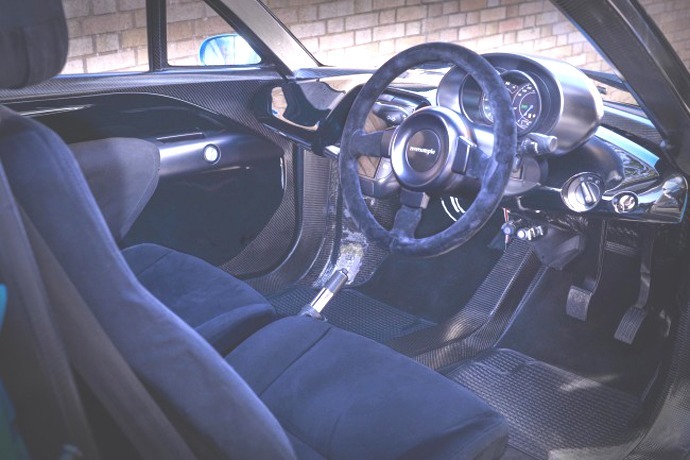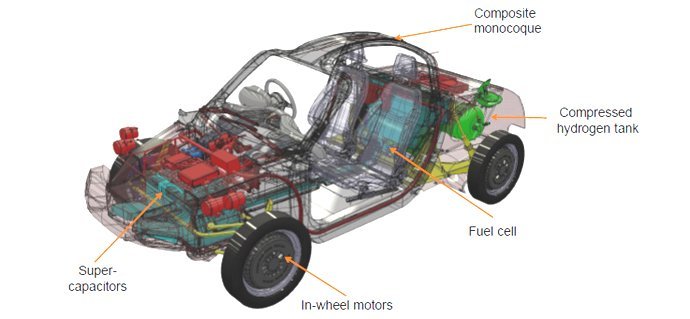
There are signs the death knell is tolling for the internal combustion with the announcement this week that France is to ban petrol and diesel vehicles by 2040.
The news will have come as little surprise to car makers, who have long been aware that time is running out for fossil fuels, but perhaps it took the VW emissions scandal for the world to wake up at last to the health impacts and environmental damage caused by cars. In fact, with an estimated 40,000 premature deaths caused every year by polluted air in Britain alone, it is shocking that we have put up with dirty exhaust gases for so long.

By coincidence, this was also the week that Volvo declared that all its new cars launched from 2019 will be partially or completely battery-powered. And even BMW, makers of the self-declared ‘ultimate driving machine’ are now offering their customers a boot-mounted electric scooter with the promise that it “can take its rider from parking space or city limits to the final destination inside the congested city centre.”
The decision by France to ban petrol and diesel cars is part of it’s plan to be carbon neutral by 2050 – a pledge that includes no longer using coal to produce electricity by 2022.
The car you drive is about to change
New technology can establish itself extremely quickly – think of mobile phones. The good news for French drivers – and the rest of us when our own governments eventually play catch up, is that forward thinking car makers have already made plans for this sea change. As well as established companies like Renault and its range of electric cars, tech companies like Apple and Google are developing zero emission vehicles. Here in Britain, entrepreneurs are busy developing disruptive technology to step in once petrol and diesel vehicles are banned.
The Riversimple Rasa is a hydrogen car that aims to radically change the way we think of personal transport; an affordable, hassle free, fun-to-drive eco car. Under the French plan, those without the means to buy a clean vehicle will receive a grant, but the Rasa is never owned outright. Instead, it is leased like a mobile phone.
Tabula Rasa means ‘clean slate’ in Latin. It’s an apt name for the new Riversimple car, a vehicle that redefines personal transport in our age of increasing population and diminishing natural resources.
Every aspect of the Rasa has been created for simplicity, efficiency, lightness, strength, affordability, safety and sustainability.

In some respects, the Rasa can be likened to the Citroen 2CV, the iconic workhorse of post-war France. The two cars share a purpose of design, top speed of 60 mph and a weight of around 580 kg, but the Rasa is very much a car for today. Its chassis is a monocoque made from very stiff carbon fibre composites and yet weighs less than 40kg.
Weight distribution is even thanks to four electric motors, one in each wheel. The motors double up as brakes – recovering over 50% of kinetic energy when braking. Super-capacitors store this energy and provide most of the power for acceleration.

The production prototype should do the equivalent of 250 mpg with a range of 300 miles. Emissions are zero at tailpipe and around 40 gCO2/km if the hydrogen comes from natural gas.
The next stage in the development of the Rasa will see a fleet of twenty being used by members of the public for a year.
Very few mobile phone users buy their handset upfront. Most of us spread the cost over the term of the contract. It’s a model that the makers of the Rasa aim to apply to motorists wanting to use a hydrogen car; they will retain ownership of the cars and sell mobility as a service.
Rather than buying the hydrogen car outright or having to set up a hire purchase agreement, a simple pricing structure enables customers to pay a single monthly fee that covers everything – the car, the maintenance, the insurance, the fuel. The rationale is that customers have all the pleasure but none of the hassle of ownership. From the manufacturer’s perspective, it pays to make a car that lasts as long, and runs as well, as possible.
More at riversimple.com
How does a hydrogen car work?
Hydrogen can be used as a fuel for electric cars thereby doing away with the need for a battery – the car does not have an engine in the conventional sense as it uses instead a fuel cell stack, a device that uses an electrochemical reaction between hydrogen and oxygen to produce electricity to power a motor. These so-called fuel cell vehicles can travel longer distances than electric vehicles that need to be re-charged directly from a mains supply.
At an early stage, the Riversimple venture was backed by Sebastian Piech, a great-grandson of Ferdinand Porsche, who in 1898 worked on the Lohner Electric Chaise – one of the world’s earliest electric cars. The Lohner car had a top speed of 31 mph and a maximum range of 30 miles.
ETA: Ethical breakdown cover
Established over 25 years ago, and with over 5,000 recovery trucks on call 24/7, the ETA has a proven track record of providing efficient, reliable breakdown cover. We handpick only the best local mechanics and garages around Britain to send out if you break down. We believe this way of working is efficient, environmentally friendly and helps support local communities and economies, too. It’s one of the reasons we have been voted Britain’s most ethical insurance company.
Chris Beazer
“is part of it’s plan to be carbon neutral” – please write correct English.
Tony
Great article. More detail than in many in ETA Weekly News, I found it very informative. A move away from fossil fuels certainly creates many challenges, for the way we decide to live our lives in practical everyday terms, as well as the technical challenges.
Linden Edwards
It is all very well banning the internal combustion engine in cars, however to charge their batteries electricity generated at times in coal, oil or even gas fired power stations is required. Yes some electricity is produced using other methods but by no means all.
Note I am no lover of cars . I have one but when possible I use my bike, walk or use public transport.
Surely we need to look at air travel, I dread to think about the amount of pollution aircraft produce.